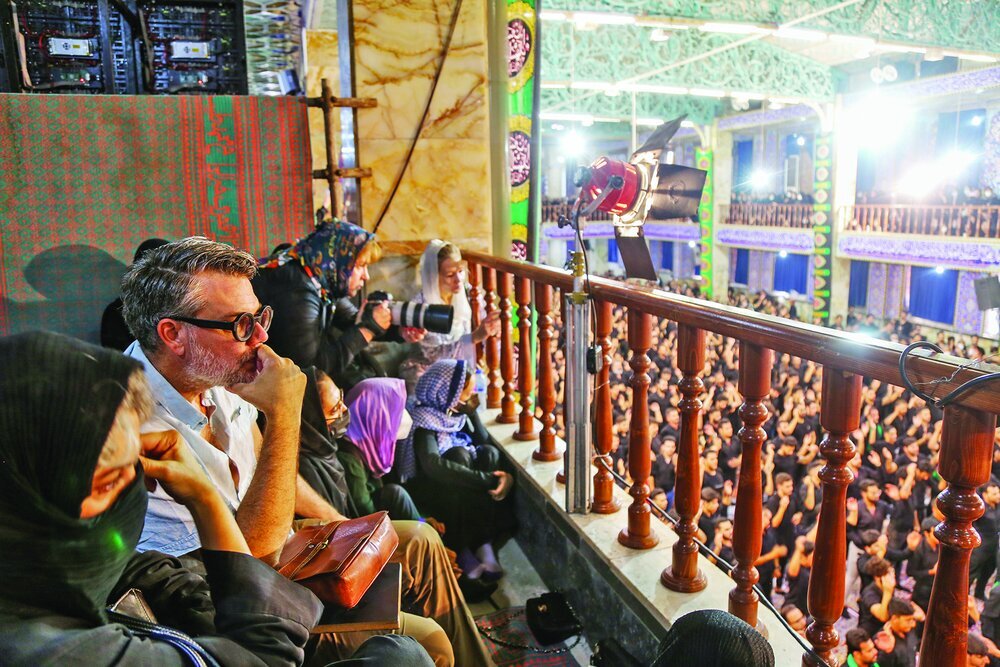Foreign travelers in Yazd attend Muharram mourning rituals

TEHRAN – This year, like years before, some foreign travelers in Yazd attend Muharram mourning rituals, in which the locals commemorate the martyrdom anniversary of Imam Hussein (AS) and his loyal companions, slain in 680 CE at Karbala in modern-day Iraq.
“For instance, a group of 25 travelers from South Korea paid visits to mourning ceremonies held in Yazd on Saturday,” a local official in charge of religious tourism said on Sunday.
“We have had requests from Turkey, Spain, South Korea, and some other countries to participate in [religious] rituals of the month of Muharram, especially Tasua and Ashura in Yazd and necessary arrangements have been made in this regard,” the official said.
Last year, 415 foreign tourists from 16 countries participated in the Muharram mourning ceremonies of Yazd province, the official said. “Those tourists were from Italy, Spain, Germany, France, Czech Republic, Turkey, Portugal, China, Hungary, Holland, Austria, Poland, Russia, Switzerland, Chile, and Croatia.”
Here are some comments made by some foreign travelers in an interview with the Iran Press last year:
Elina from Italy said it was the first time she visited Iran and saw Muharram mourning rituals and the Iranian culture, which she said was very admirable. “Rituals full of emotions and many religious people; I respect this belief very much, “she expressed her feelings.
A visitor from Barcelona said: “We came to Iran to get familiar with the customs here; the real face of the country is the opposite of what we were told about… Real emotions were seen in the Iranian society; the people adhere wholeheartedly to their religion and traditions.” The Spanish traveler added: "The feeling and companionship of the people has affected us; we thank the Iranians for accepting us.”
“It’s a very interesting ritual; the people of Yazd are calm and kind,” a Russian visitor from St. Petersburg said. He said he was a historian and that he knew Imam Hussein (AS) and agreed with him.
“We were so excited to know about the traditions here; I’m of the advocates of the places where traditions and customs are important,” a female traveler from Croatia said, adding the poems which were cited, the way people prayed and beat their chests, and their emotions were magnificent and spectacular.
Yazd has long been a destination for domestic and foreign tourists who are willing to witness centuries-old mourning ceremonies held during the months of Muharram and Safar. Holidaymakers may attend mourning ceremonies, such as Nakhl-Gardani or Nakhl-Bardari, which is a symbolic representation of the Imam’s coffin, resembling an Imam’s funeral; Tazieh, a passionate play inspired by historical and religious narrations; and Sineh-Zani [beating the chest].
Muharram and the following month, Safar (which includes a commemoration of the aftermath of Karbala) are a period of lamentation for Muslims. War and fighting are prohibited during Muharram and festivities like weddings and birthdays are usually postponed to more appropriate days. People generally wear black out of respect or at least avoid wearing very bright colors.
They say the core meaning of Muharram is beyond such mere bereavement and commemoration of the past. Karbala was an actual and metaphorical venue where the Truth confronted the Lie, where justice spoke vibrant and audible in the face of prejudice, and where courage, passion, and devotion preceded attachment, worldliness and obstinacy.
In July 2017, the historical core of Yazd was named UNESCO World Heritage. Yazd is regularly referred to as a delightful place to stay, or a “don’t miss” destination by almost all of its visitors. The city is full of mudbrick houses that are equipped with innovative badgirs (wind catchers), atmospheric alleyways, and many Islamic and Iranian monuments that shape its eye-catching city landscape.
The historical core of Yazd is chockful of mudbrick houses, bazaars, public bathhouses, water cisterns, mosques, synagogues, Zoroastrian temples, and centuries-old gardens. From the divine point of view, the city enjoys the peaceful coexistence of three religions: Islam, Judaism, and Zoroastrianism.
AFM
